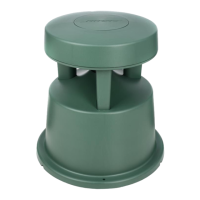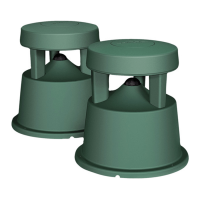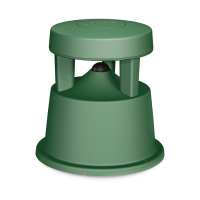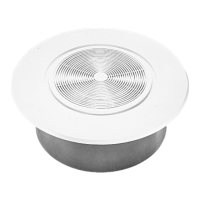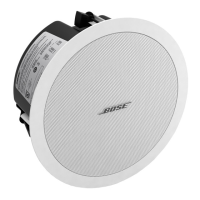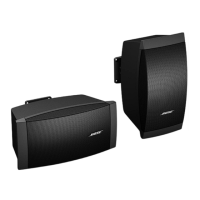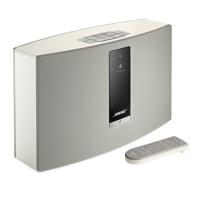82
TEST PROCEDURES
• Remove the eight screws that secure the SMPS / Amplifier PCB to the enclosure.
Disconnect the wiring harnesses from connectors J4 and J5. This will disconnect the
woofers from the amplifier outputs. Ensure all other wiring harnesses are connected.
CAUTION: You MUST disconnect the AC line cord from the unit when connecting the
driver wiring harnesses to the amplifier PCB outputs at J4 and J5 below. The smaller heatsink
plate on the amplifier PCB has high voltage (400V) on it when the unit is connected to AC mains.
• Connect a 3 ohm, 250 Watt load resistor to each of the J4 (upper woofer) and J5 (lower
woofer) connectors on the SMPS / Amplifier PCB assembly.
CAUTION: Do not operate the unit under test into the load resistors for a long period of
time while performing these tests. Doing so will overheat the load resistors.
Input 1 Tests
7. Input 1 and 2 Gain and THD+N Tests
7.1 Set the Input 1 trim control to MAXIMUM (fully CW). Set the Input 2 trim control to MINIMUM
(fully CCW).
7.2 Apply a balanced 50 Hz, -2 dBu signal to the Input 1 XLR connector.
7.3 Measure the output level at the J4 (upper woofer) connector. It should be +32.2 dBu, +/- 1 dB.
Measure the THD+N level. It should be < 0.1%.
7.4 Measure the output level at the J5 (lower woofer) connector. It should be +32.2 dBu, +/- 1 dB.
Measure the THD+N level. It should be < 0.1%.
8. Equalizer Tests
8.1 Set the Input 2 trim control to MAXIMUM (fully CW). Set the Input 1 trim control to MINIMUM
(fully CCW).
8.2 Apply a balanced 20 Hz, -7 dBu signal to the Input 2 XLR connector.
Test continued on next page ------->
